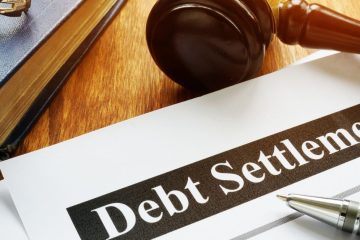If you’re struggling with your debt, there are a number of things you can do yourself to get back on track. Difficulty with debt, especially finding the money to make timely payments, can keep you up at night worrying.
Instead of tossing and turning, try some of these time-tested do-it-yourself (DIY) solutions to debt problems.
Don’t have a budget – Now’s the time
Of all the DIY debt solutions for difficulty with debt, by far the most important and effective one is to develop a budget, assuming you don’t already have one.
The first step in developing a budget is keeping track of your monthly income and expenses. Remember to keep track of everything for a couple of months, so that you have a good idea of where you typically spend your money. You may be surprised — many are.
Once you know where you have been spending your money, set aside some time as a family to set spending priorities. You may find that the daily Starbucks stop is a lower priority than something like a family vacation. Also, think about setting up some kind of reserve savings account for annual expenses. By putting a little money away each month to cover annual expenses, like Christmas gifts and back to school supplies, you can take the stress out of those expenses.
Take a new look at your old budget
If you have a budget, it may be time to adjust it. Budgets should never be set in stone; they must be audited and revised frequently. The reason behind your difficulty with debt and paying your bills on time might be as simple as an outdated budget. As a general rule, it’s a good idea to revisit your budget when you:
- Are planning a purchase
- Gain or lose income
- Are considering new debt such as a credit card, auto loan, or mortgage
- Experience health or job-related problems
- Are planning for new expenses like a baby on the way, or a special vacation
- Are having difficulty making monthly payments
Re-check the figures you are using to determine your income and outgoing expenses. Make sure you have included all of your expenses. Next, subtract your total expenses from your credits (income). If the answer is greater than zero, you can solve your problems by readjusting where you spend your money each month. Pay your debts first, and use the rest for your other expenses. Make debt elimination your highest priority.
If your answer is a negative number, you need to either make cuts or add income.
Consolidate multiple debts into one
Several credit cards can nickel and dime your budget into the red. For example, if you have three maxed-out credit cards that carry a high interest rate, you could easily be paying over $600 a month. That’s just the minimum payment, and most of it is likely going to interest! If you continue to make minimum payments, it will take you over ten years to pay off your debt and cost thousands in interest charges.
However, if you consolidate your cards into a bank loan at a lower interest rate, you can pay off your credit cards, save on interest charges, and cut your payment amount. You can also consolidate credit card debt into one card and take advantage of a no-interest period. (Note: if you do this, make sure you have a solid plan to repay the amount before the promotional period expires.)
Refinance your home or car
If your difficulty with debt can only be solved by paying off your creditors, you might want to consider refinancing your home and using the cash you receive to pay off your debts. Refinancing your home to eliminate debt is a big step and you should consider this solution carefully. You will be paying less and saving on interest. Also, most home refinance loans carry a much lower interest rate than consolidation loans, making a refinance a cheaper way to get rid of your debts. However, if you fall behind again, your home could be at risk.
DIY debt solutions that do NOT solve debt problems and should be avoided:
- Cash in retirement savings plans — pensions or RRSP’s These are exempt from seizure by your creditors. If, in the end you find that you need to declare bankruptcy to solve the debt problem, your RRSP’s will be exempt — that means you will be able to keep them in most situations.
- Borrow from family or friends. Borrowing from family and friends too often leads to damaged relationships. While you have the best of intentions to repay the loan, you cannot predict the future. It is one thing to default on a credit card company, and an entirely different thing to do so on your brother-in-law.
- Ask family members to co-sign a loan. By co-signing, they are agreeing to pay the loan if you have to default. Again, the best of intentions often cannot overcome some of life’s problems and you run the risk of leaving someone you love with a debt they cannot pay.
- Use payday loans. Payday loans take a big cut of our paycheque. Using them just gets you in debt faster.
When the do-it-yourself approach doesn’t work
Catching money problems before they need the help of a financial expert allows you deal with your difficulty with debt on your own. Hopefully, these DIY solutions will help you get your personal finances back in control. However, sometimes the problem is just too big for a DIY approach. When that happens, it is time to see a professional for advice.
The best trained, most knowledgeable and experienced professionals in this field are Licensed Insolvency Trustees – like the ones at LCTaylor. We will meet with you at no charge, review your entire situation with you in detail, and explain all of the possible options available to you. You may even find that, with some guidance from a professional, you can make one of the options above work for you. If the problem truly is beyond a DIY approach, we can offer legislative solutions like a Consumer Proposal or an Assignment in Bankruptcy.

















